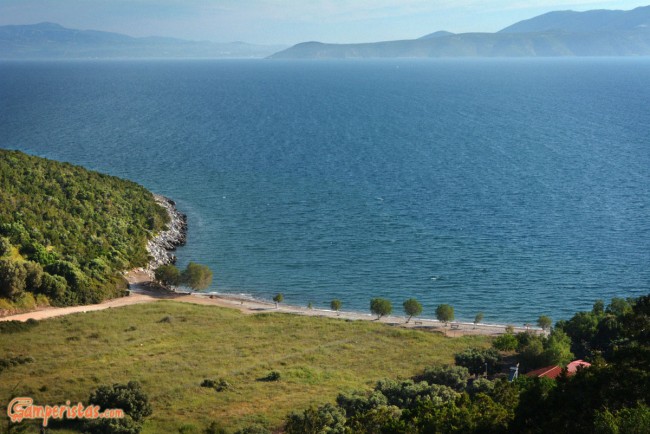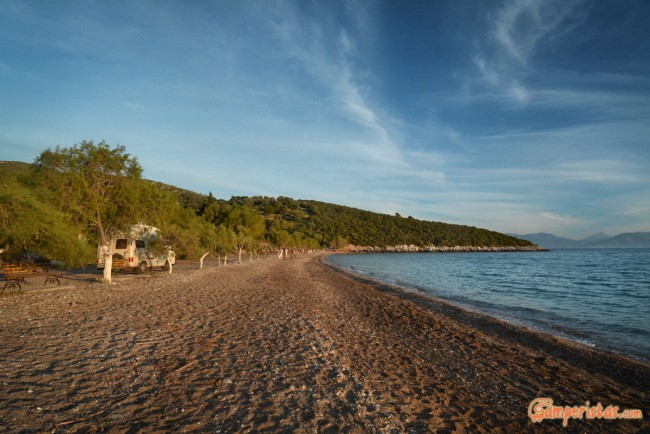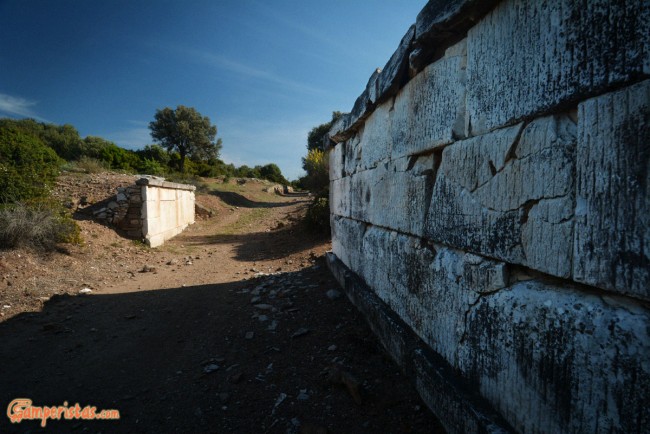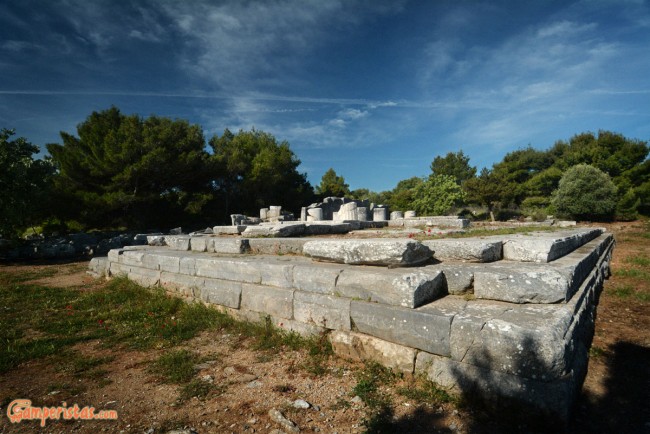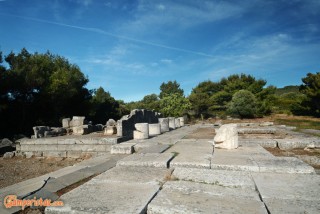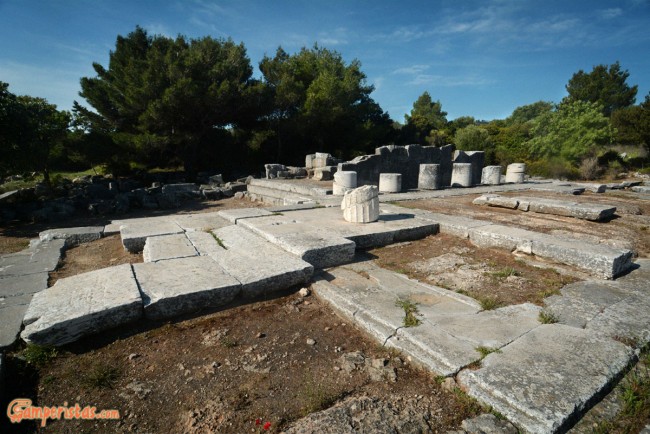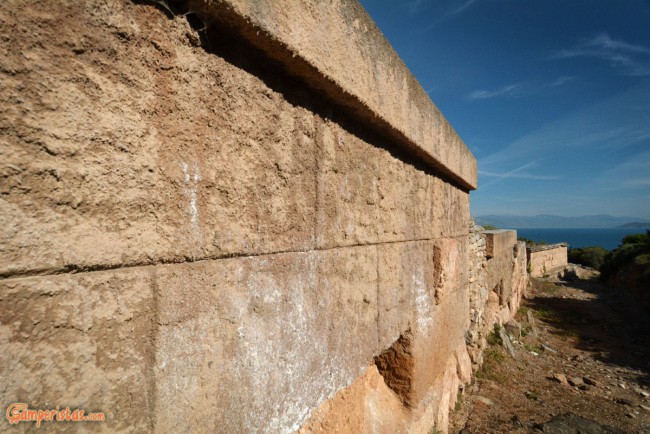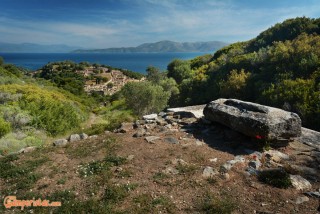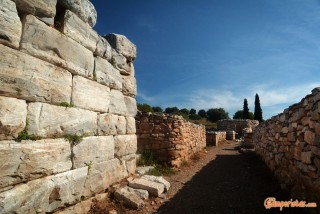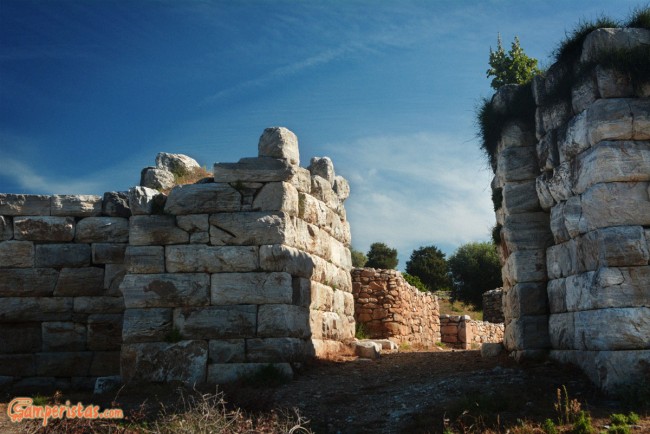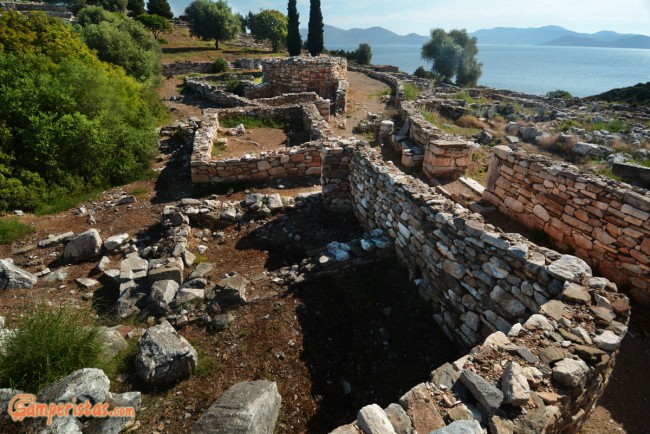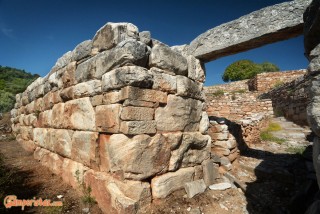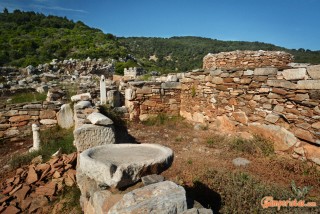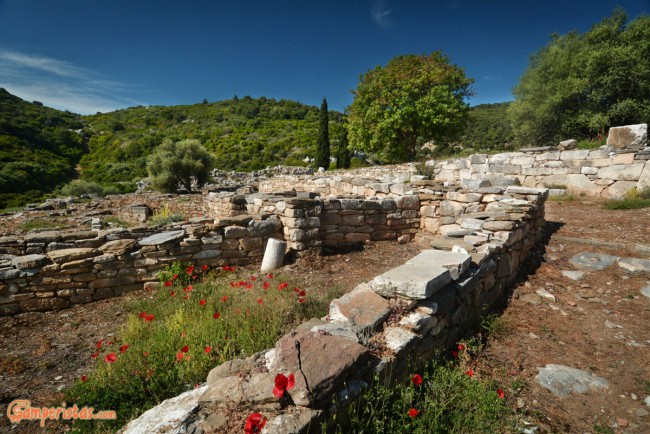
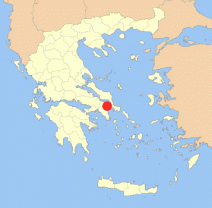 Not far away from Athens, just a couple of kilometers after Marathon, lies the best preserved ancient village of Attica’s classical era. Rhamnous or Ramnous is situated in an idyllic hilly landscape overlooking the South Evoikos Gulf and it’s a wonderful place to be whether you want to feel like Indiana Jones in the search for ancient traces or just take a walk. Nearby there is an excellent beach where we spent a peaceful night (first week of May).
Not far away from Athens, just a couple of kilometers after Marathon, lies the best preserved ancient village of Attica’s classical era. Rhamnous or Ramnous is situated in an idyllic hilly landscape overlooking the South Evoikos Gulf and it’s a wonderful place to be whether you want to feel like Indiana Jones in the search for ancient traces or just take a walk. Nearby there is an excellent beach where we spent a peaceful night (first week of May).
The original plan was to start our journey by visiting the archaeological sites of Marathon, but we left our house in Athens late in the noon, so everything was closed! We decided to head towards the beach of Sessi (the small one [38.24234, 24.00226] as nearby there is another bigger and more frequented). It was an excellent choice!
On our way there we passed by the entrance of the archaeological site of Ramnous to check if it was also closed. Of course it was! The paved road ends at the entrance of the site turning into a dirt road. According to our GPS this was the ‘road’ to Sessi beach and we decided to trust it. It turned out that the road was not that bad but I don’t think that it is worth the try. As we discovered the next morning, there is another paved road connecting the small Sessi beach with Ramnοus archaeological site, just 6 km longer than the unpaved one…
Be very careful at the end of the downhill, just few meters before turning right to reach the beach, because the slope there is very steep. Slow down to avoid hitting the ground with the front of the car. The beach is very calm but not ‘out of civilization’. There are showers with a very convenient tap in case you need water.
We woke up early and we took the paved road to Ramnous site [38.21558, 24.02791] where we arrived at 8.30 a.m. We were the first visitors of the day! The parking lot is not ample so we parked carefully, trying to leave space for the others. The entrance ticket costs 2 €. Don’t forget to bring with you a bottle of water and to wear proper shoes.
The first stop is at the Nemesis temple or whatever was left of it after the destructive rage of christian fanaticism (4th c. A.D.). The temple was built by the same architect who ‘signed’ the Temple of Hephaestus temple of Athens, also known as Theseion, and the Temple of Poseidon in Sounio! Allegedly the statue of Nemesis was made of the marble that the Persians had brought with them in order to construct their Trophy, sure of their victory in the Marathon battle…
The temple is not fenced off so we can walk ‘inside’ the sanctuary where, a few thousands years ago, began the cult of Nemesis, the goddess of Divine retribution.
The path continues downhill passing by walls who used to be grave sites.
After a while we reached a gate with a ‘prohibited’ sign but it was open so we continued further down the coast. Besides the ticket cashier has told us that after the Temple we will proceed to the Fort. Indeed, a few minutes later here is the Fort! To be sincere I didn’t expect to see something like this… It was so impressive that our mouth hang open in surprise.
The fort was first inhabited in the Neolithic era but it reached its heyday during the 5th-3th c. B.C. During that time it served as a military outpost guarding the straits of South Evoikos Gulf. The young Athenians came here to complete their military service. This now silent place used to be full of energy, noise and bustle from the youth activities!
Our visit lasted 2 hours (very well spent!). The hike, although at some places was uphill, was not at all demanding. In any case, it is best to start early in the morning because afterwards it gets really hot, even in spring time!

